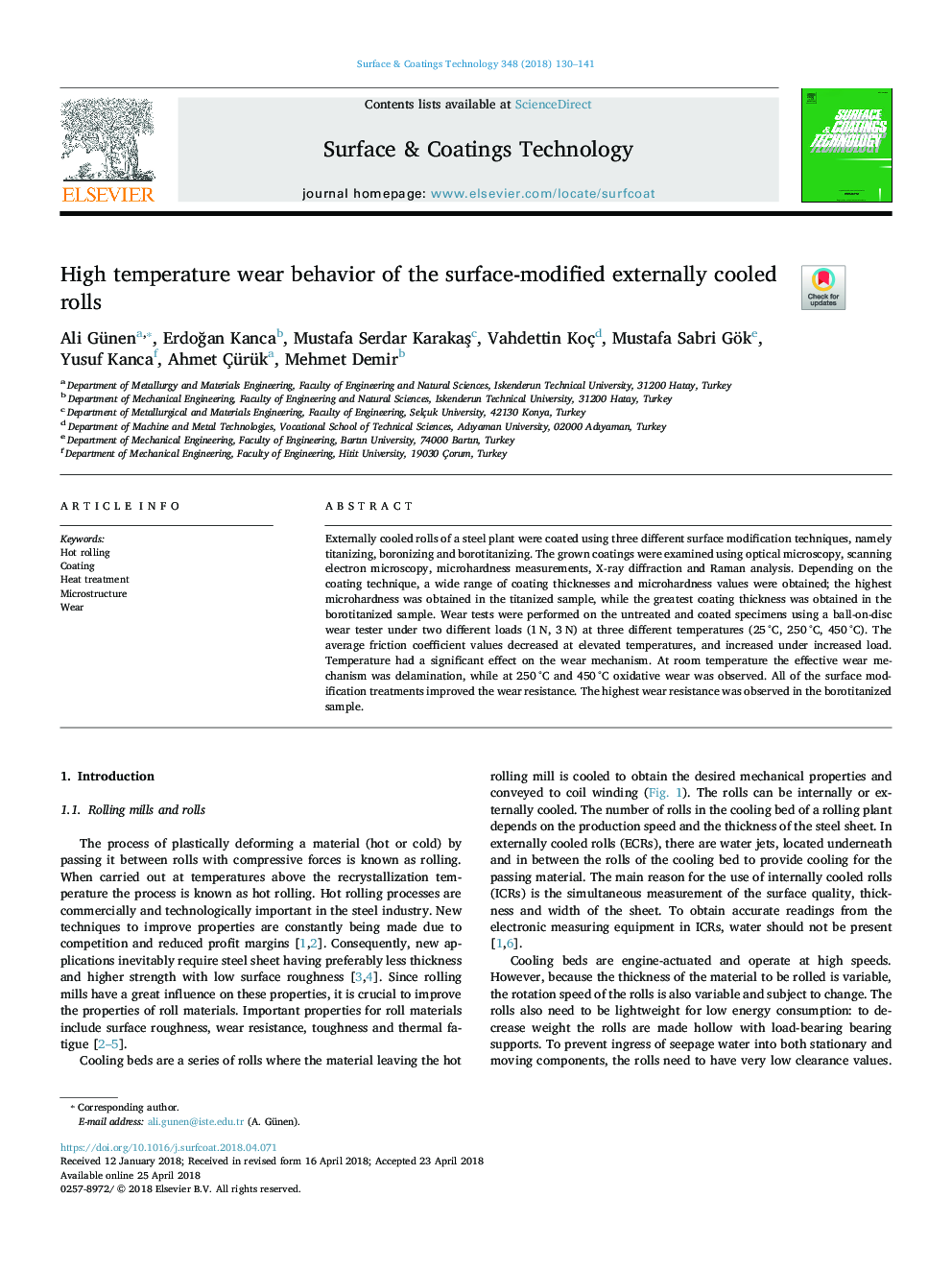| Article ID | Journal | Published Year | Pages | File Type |
|---|---|---|---|---|
| 8023515 | Surface and Coatings Technology | 2018 | 12 Pages |
Abstract
Externally cooled rolls of a steel plant were coated using three different surface modification techniques, namely titanizing, boronizing and borotitanizing. The grown coatings were examined using optical microscopy, scanning electron microscopy, microhardness measurements, X-ray diffraction and Raman analysis. Depending on the coating technique, a wide range of coating thicknesses and microhardness values were obtained; the highest microhardness was obtained in the titanized sample, while the greatest coating thickness was obtained in the borotitanized sample. Wear tests were performed on the untreated and coated specimens using a ball-on-disc wear tester under two different loads (1â¯N, 3â¯N) at three different temperatures (25â¯Â°C, 250â¯Â°C, 450â¯Â°C). The average friction coefficient values decreased at elevated temperatures, and increased under increased load. Temperature had a significant effect on the wear mechanism. At room temperature the effective wear mechanism was delamination, while at 250â¯Â°C and 450â¯Â°C oxidative wear was observed. All of the surface modification treatments improved the wear resistance. The highest wear resistance was observed in the borotitanized sample.
Related Topics
Physical Sciences and Engineering
Materials Science
Nanotechnology
Authors
Ali Günen, ErdoÄan Kanca, Mustafa Serdar KarakaÅ, Vahdettin Koç, Mustafa Sabri Gök, Yusuf Kanca, Ahmet Ãürük, Mehmet Demir,
